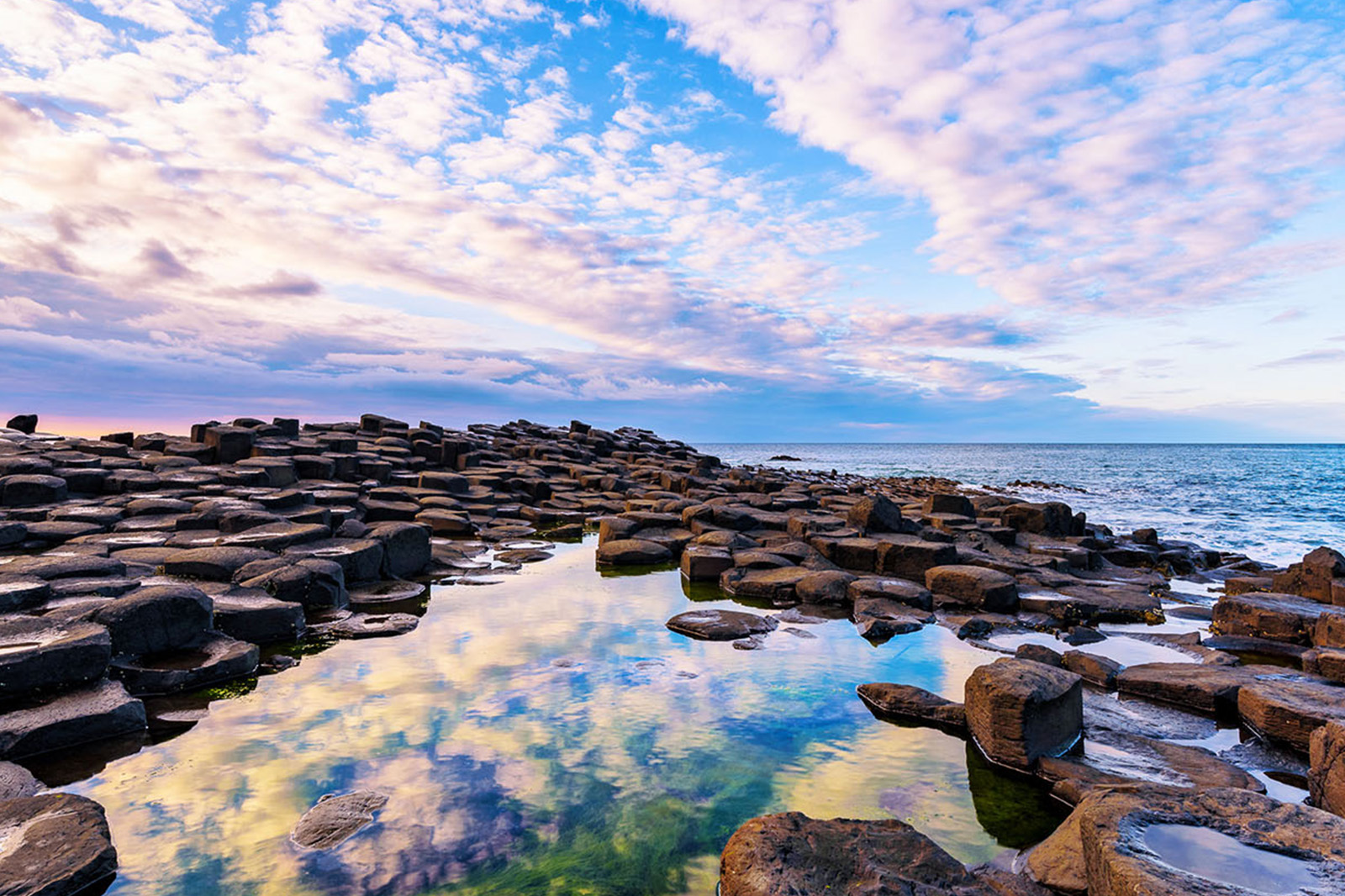Discover
In Northern Ireland’s Antrim county, over 40,000 basalt columns line the coast in hexagonal and octagonal forms. One legend of these magnificent columns is that an Irish giant, Fionn mac Cumhaill (Finn McCool), picked a fight with Scottish big man, Benandonner. After Benandonner insulted Fionn and challenged him to a fight, the Irish giant created a stepping stone pathway to reach Scotland. Benandonner then fled back to Scotland, ripping them up and leaving what is now Giant’s Causeway, or Clochán an Aifir or Clochán na bhFomhórach in Irish.
Another legend states that Fionn actually hides from Benandonner when he realizes that the Scottish giant is so much larger than he is. Fionn’s wife, Oonagh, then disguises Fionn as a baby and lays him in a cradle. Once Benandonner arrives and sees the “baby”, he believes Fionn to be an incredible giant and flees to Scotland, frightened of the size of the father of such a baby. During his escape, he destroys the causeway so Fionn cannot follow.
In the 17th century, there was a great deal of speculation as to whether or not Northern Ireland’s Giant’s Causeway was created by men with chisels and picks, or by giants. In the late 1730s, an artist, Susanna Drury, spent some months over there. She painted watercolor paintings of the Causeway and her declaration of its magnificence ensured that it became noted on The Grand Tour. It wasn’t until 1771 when a Frenchman declared this natural wonder to be the result of volcanic action. It occurred 50-60 million years ago when the county Antrim was ripe with volcanic activity. When the lava rapidly cooled, it contracted, and various rates of cooling created the majestically symmetrical formations.
In November of 1986, UNESCO added this beautiful spot to the World Heritage List. With formations that leave your mind spinning, it’s not difficult to see why UNESCO added this site to the list. The solidified lava in the cliffs is as thick as 28 meters (92 feet). The columns vary in their number of sides, and are as tall as 12 meters (39 feet) high. The amazing columns, the staggering rock formations offer a home to extraordinary seabirds and plants. Visitors journey here every year, walking the rugged cliffs, voyaging back in time and imagining the would-be battles of the giants.















